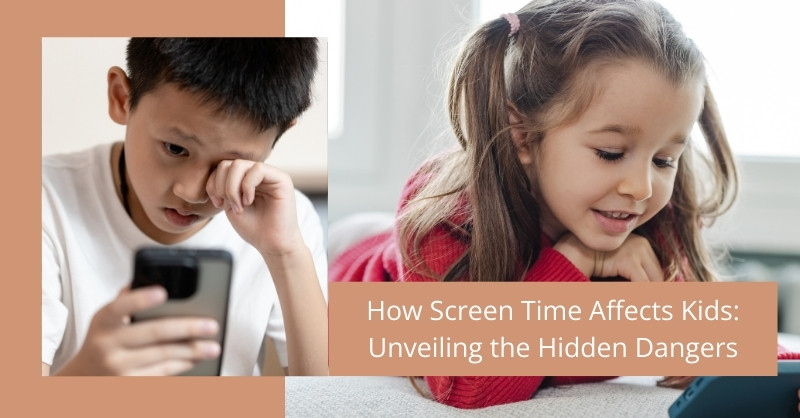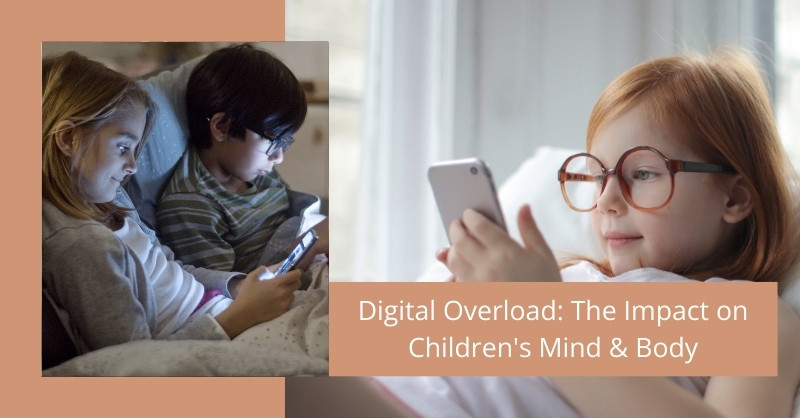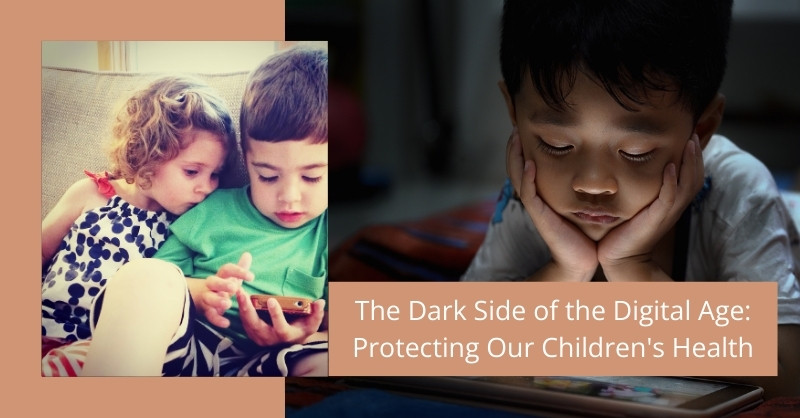The Dark Side of the Digital Age: An Overview
The “Dark Side of the Digital Age” refers to the unintended consequences of technology, particularly how gadgets harm our children. While modern technology offers numerous benefits, its impact on children’s mental health, development, and social interactions cannot be ignored. Parents often struggle with issues like screen addiction, internet addiction disorder, and kids becoming overly dependent on devices like smartphones and iPads.
The Dark Side of the Digital Age: Health Hazards of Electronic Devices for Kids
Excessive use of gadgets poses significant health risks for children. Prolonged screen time can lead to vision problems, posture issues, and even obesity due to lack of physical activity. Studies reveal that children addicted to screens are at a higher risk of developing sleep disorders, anxiety, and depression. This highlights the importance of recognizing the “Dark Side of the Digital Age.”
Moreover, constant exposure to blue light emitted by screens disrupts the natural sleep cycle. This can result in chronic fatigue, decreased academic performance, and an overall decline in health. Parents must ensure their children take regular breaks from screens and maintain a balanced lifestyle to counter these hazards.
Physical Health Risks
One of the most immediate concerns associated with the Shadows of the Digital Era is the impact on children’s physical health. Prolonged screen time can lead to various health issues, including:
- Poor Posture: Slouching for extended periods can cause back pain, neck pain, and other musculoskeletal problems.
- Eye Strain: Staring at screens for hours can lead to eye strain, headaches, and blurred vision.
- Sedentary Lifestyle: Excessive screen time can reduce physical activity, leading to obesity, heart disease, and other chronic health conditions.
- Sleep Disruptions: Exposure to blue light emitted by screens can interfere with sleep patterns, leading to insomnia and other sleep disorders.
The Digital Dilemma: Effects on Children’s Development
The “Dark Side of the Digital Age” extends to children’s cognitive and social development. Overexposure to technology often hampers critical thinking and problem-solving skills. Babies and young children may experience delayed language development as they spend more time with gadgets than engaging in human interactions. Furthermore, technology can interfere with their ability to form meaningful relationships.
Social skills are also impacted as children become less adept at face-to-face communication. This reliance on virtual interactions creates a barrier to developing empathy and emotional intelligence, which are critical for healthy relationships and career success in the future.

Screen Addiction and the Dark Side of the Digital Age
Screen addiction is one of the most pressing concerns of the digital age. Kids addicted to smartphones or iPads may exhibit withdrawal symptoms when devices are taken away. This addiction can lead to reduced attention spans and difficulties in academic performance. Parents must address this issue by setting boundaries and promoting healthier habits.
Additionally, the compulsive need to check devices disrupts family time and reduces opportunities for bonding. Parents should encourage alternative activities like reading, sports, or creative hobbies to help children break free from their dependency on screens.
Internet Addiction: A Major Problem in the Dark Side of the Digital Age
Internet addiction, or internet addiction disorder, is another critical aspect of the “Dark Side of the Digital Age.” Children and teenagers spend countless hours browsing social media, playing online games, or watching videos. This obsession often results in a lack of focus on studies, reduced physical activity, and increased isolation from family and friends.
Over time, this behavior can escalate into unhealthy coping mechanisms for stress and boredom. To combat internet addiction, parents must monitor their children’s online activities and establish rules to limit usage, ensuring that technology is used as a tool rather than a crutch.
Technology and Parenting in the Dark Side of the Digital Age
Parenting in the digital age is increasingly challenging. The “Dark Side of the Digital Age” requires parents to take proactive measures to ensure their children use technology responsibly. Encouraging outdoor activities, limiting screen time, and engaging in meaningful conversations are essential strategies for tackling this issue.
Furthermore, parents must educate themselves about the apps and platforms their children use. Staying informed enables them to guide their kids effectively and prevent exposure to harmful content or online predators.
Navigating the Digital Age: A Parent’s Guide
To mitigate the negative impacts of the digital age’s dark side, parents can take the following steps:
- Set Screen Time Limits: Establish clear guidelines for screen time and enforce them consistently.
- Create Screen-Free Zones: Designate specific areas in your home as screen-free zones, such as bedrooms and dining areas.
- Encourage Physical Activity: Encourage your child to engage in outdoor activities and physical exercise.
- Monitor Online Activity: Keep track of your child’s online activities and monitor their social media usage.
- Promote Digital Literacy: Teach your child about online safety, cyberbullying, and responsible internet use.
- Lead by Example: Model healthy digital habits yourself by limiting your own screen time and engaging in offline activities.
- Seek Professional Help: If you notice significant negative impacts on your child’s mental or physical health, consult with a pediatrician or mental health professional.
How to Balance Screen Time for a Healthier Lifestyle?
Balancing screen time is crucial to mitigate the negative effects of gadgets on children’s health. Establishing screen-free zones, creating a structured schedule, and leading by example are effective ways to teach kids the importance of moderation. These steps can help counter the “Dark Side of the Digital Age.”
Incorporating regular physical activities, family outings, and creative projects can also help children find joy beyond screens. Parents should reward their kids for reducing screen time, reinforcing positive behavior and fostering a balanced lifestyle.
The Impact of the Dark Side of the Digital Age on Mental Health
Mental health issues like anxiety, depression, and low self-esteem are common among children affected by the “Dark Side of the Digital Age.” Excessive gadget use can create a sense of dependency, leading to emotional instability and reduced resilience in coping with real-life challenges.
Additionally, the comparison culture on social media exacerbates feelings of inadequacy and isolation. Parents must encourage open discussions about these issues and help their children develop a healthy self-image.

Mental Health Challenges
The Dark Side of the Digital Age can also take a toll on children’s mental health. Excessive screen time has been linked to:
- Increased Anxiety and Depression: Constant exposure to social media and online bullying can contribute to anxiety and depression.
- Attention Deficit Hyperactivity Disorder (ADHD): Excessive screen time can impair children’s ability to focus and concentrate.
- Social Isolation: Spending too much time on screens can lead to social isolation and decreased face-to-face interaction.
- Cyberbullying: Children may be exposed to cyberbullying, which can have severe emotional consequences.
- Addiction: Excessive use of digital devices can lead to addiction, characterized by compulsive behavior, withdrawal symptoms, and negative impacts on daily life.
Future Implications of the Dark Side of the Digital Age
The long-term consequences of the digital age are concerning. Gadgets can negatively impact children’s academic achievements, social skills, and overall well-being. If not addressed early, these problems may persist into adulthood, affecting their career prospects and relationships.
By instilling good digital habits early, parents can prepare their children for a future where technology complements their lives rather than dominates them. Schools and communities also play a vital role in raising awareness and providing resources to address these challenges.
Conclusion: Overcoming the Dark Side of the Digital Age
To combat the “Dark Side of the Digital Age,” parents, educators, and policymakers must work together. Educating children about responsible technology use, fostering open communication, and setting clear boundaries are essential. By taking these steps, we can protect our children from the harmful effects of modern gadgets and help them lead balanced and fulfilling lives.
Recognizing the “Dark Side of the Digital Age” is the first step toward creating a healthier relationship with technology. Through collective efforts, we can ensure that the digital age empowers our children instead of hindering their potential.
Read this Article: 👉Breathing Exercise Helps to Manage Stress: Techniques for a Calmer Life
Read this Article: 👉Ultra-Processed Foods and Their Harmful Effects: Protect Your Health by Eating Better



